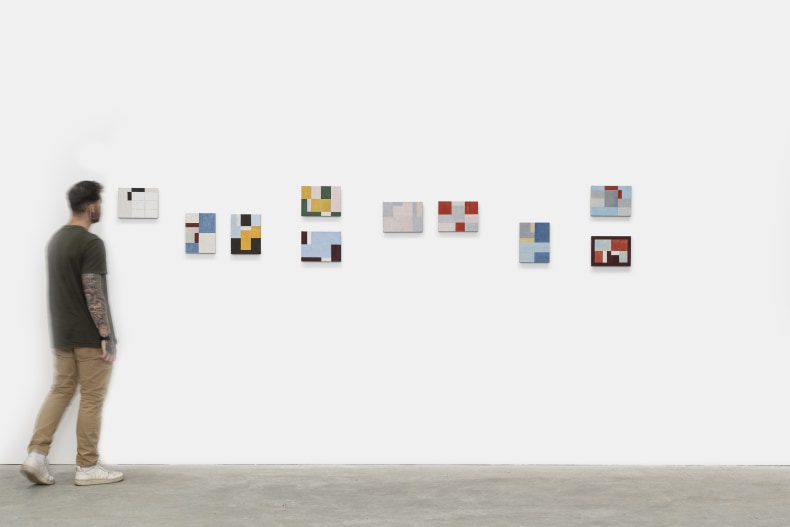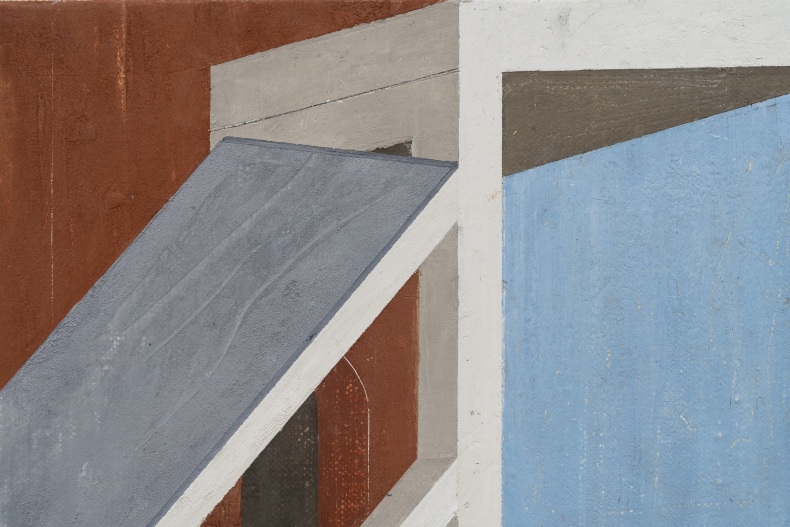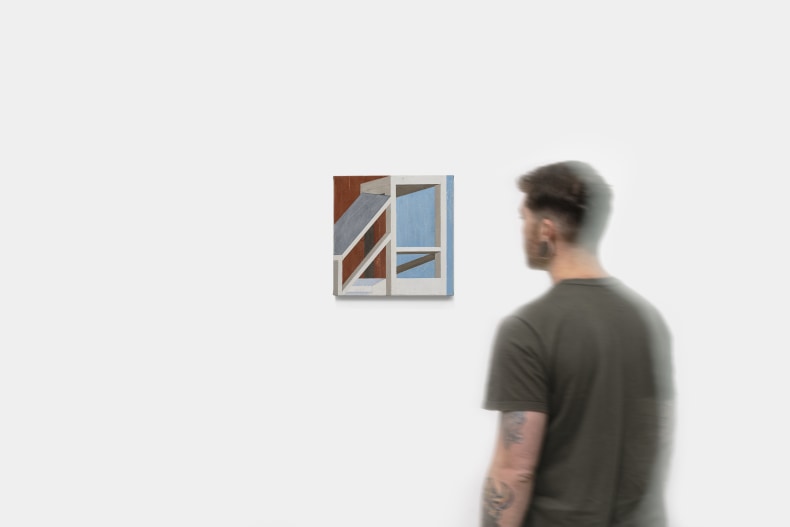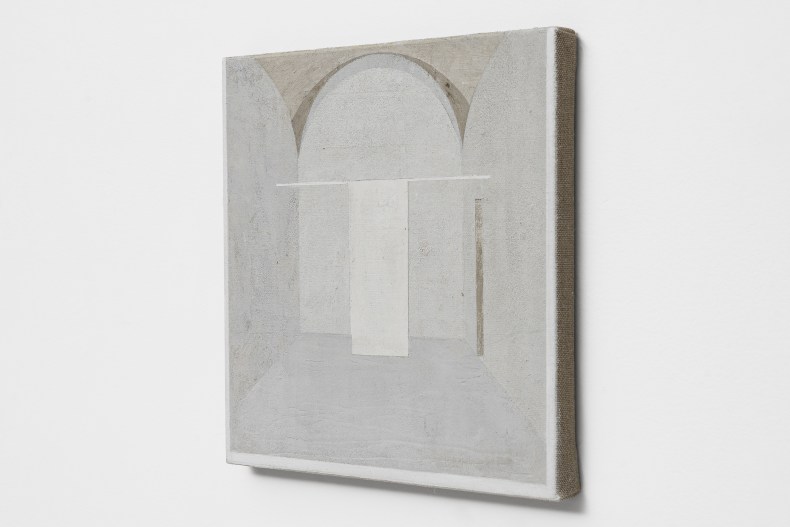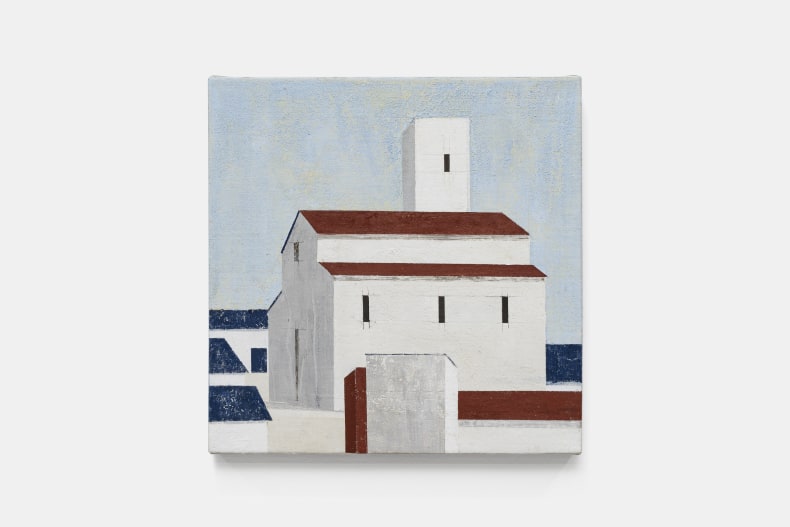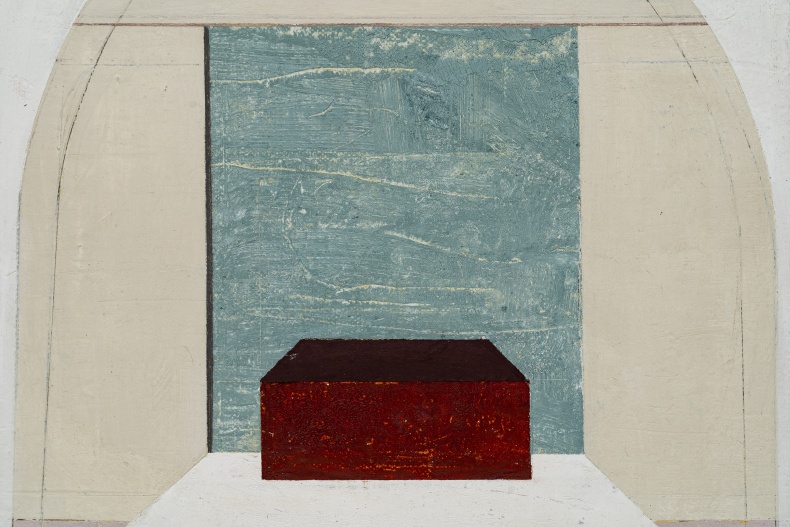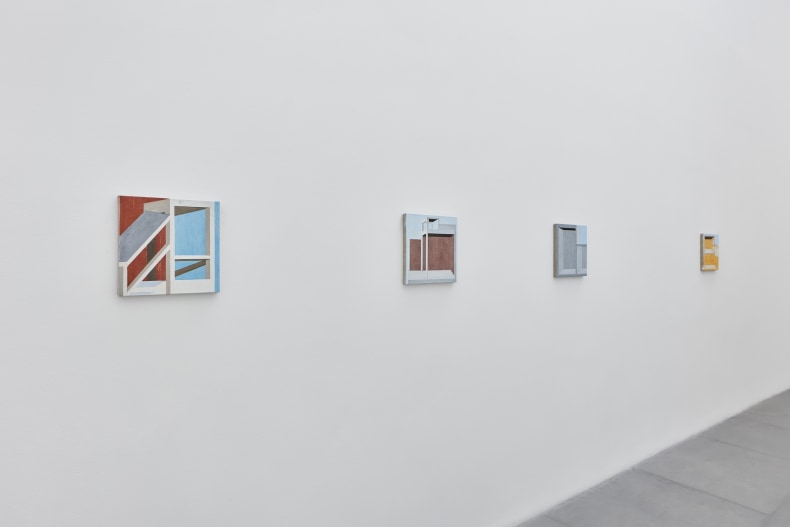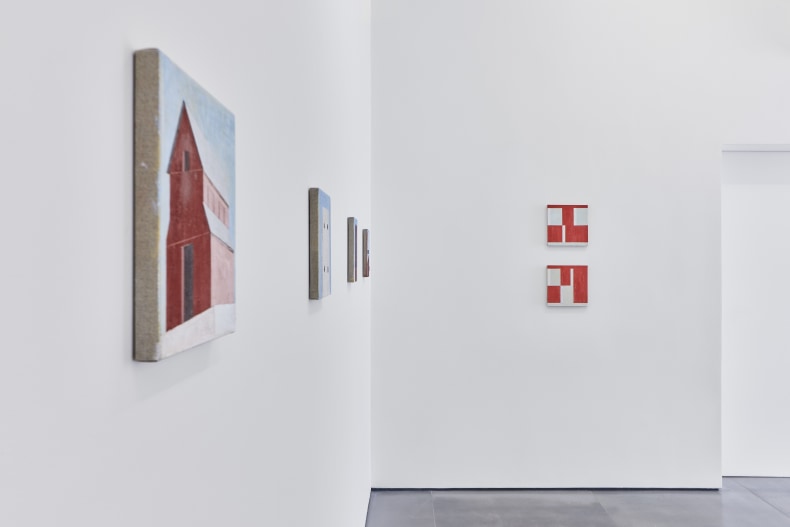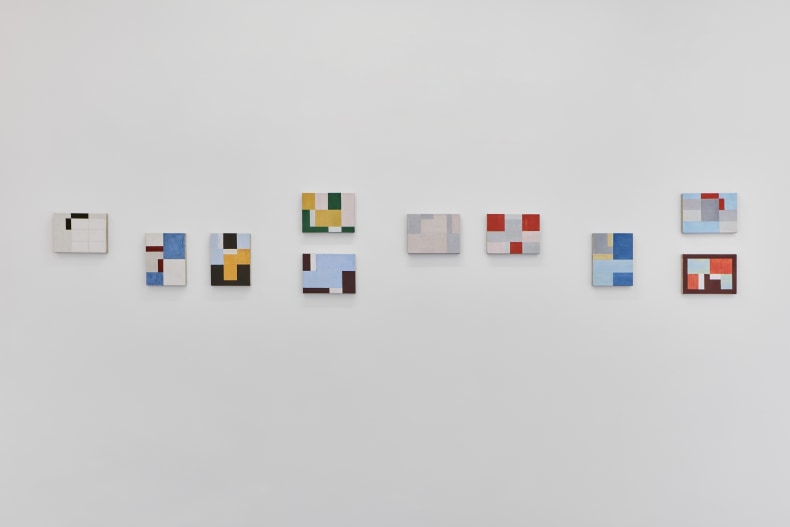Nara Roesler Rio de Janeiro is pleased to present Construtor de memória, a solo show by Fabio Miguez that brings together around 30 paintings made over the course of 2023 and which represent new developments in his Atalhos series. The most recent examples of his research are divided into two main paths developed from fragments of his personal and affective field of reference: small-format paintings made from re-readings of fragments of works by Renaissance masters and combinatorial and geometric experiments derived from the schematic planning of volumes. The show opens to the public on November 23 and will be on view trough February 17, 2024.
More than just the name of a series, Atalhos is a guiding concept in Miguez's practice. "Atalhos allows works to come together to form sentences. Depending on the neighborhood, they even take on another meaning. That's the idea of the shortcut, the passage from one referential field to another that takes place in the creation of these sets, possibly proposing new meanings," reveals the artist.
In recent years, Miguez has dedicated himself to re-readings based on fragments of works by Renaissance masters such as Giotto, Fra Angelico, Simone Martini and Piero della Francesca. Pioneers in the field of spatiality, perspective and illusionism in painting from the end of the 13th century, these masters created innovative compositions that included complex architectural structures, usually as settings for religious events. In revisiting these old paintings, Miguez removes the narrative episodes from the representations, giving prominence to space, highlighting the geometry present in these fragments displaced by the artist.
By emphasizing the spatial aspect of the pre-Renaissance compositions, the artist also establishes a point of contact between elements from the history of European painting and Brazilian art, especially the 20th century movements linked to the constructive tradition, which dwells more deeply on form and spatiality.
The second shortcut in the series takes us to another dimension of the investigation, which stems from research that began with the planning of paper boxes: using the diagrams obtained from them, Miguez began to observe the combinatorial structure present there, the rules that made up the whole and the exceptions suggested by these rules, through which the work unfolded into a series of possible compositions and new formal arrangements.
This logic of combinations, rules and exceptions can also be seen in the way the sets of works are organized in the exhibition. Whether in the sets that bring together the re-readings of the masters or in the set that brings together the combinatorial drifts achieved through the planning exercise, the viewer is invited to unveil the exceptions produced by the rules created by the artist.
